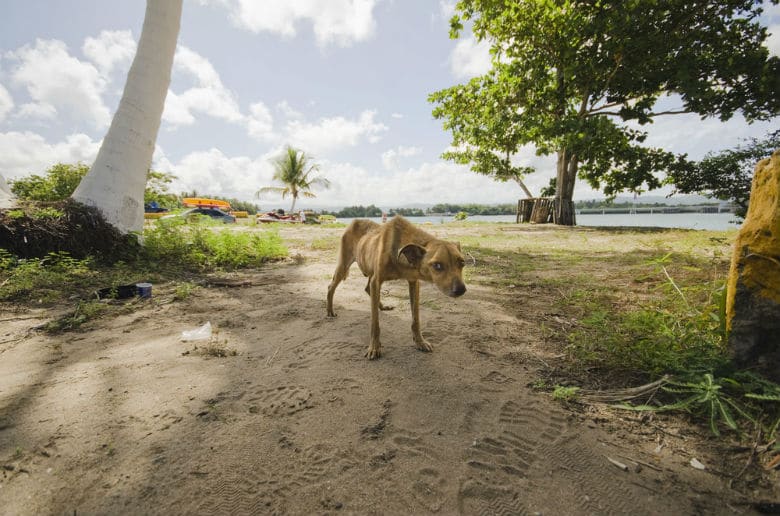For years, it has been known that Puerto Rico has a huge problem with its stray dog population.
The island is home to “Dead Dog Beach,” a strip of land on the southeastern side where people dump their dogs. But due to recent economic challenges, Puerto Rico has now earned the depressing nickname “Dead Dog Island.”
The island has racked up more than $72 billion in debt, causing 1 in 10 people to be out of work and 10 percent of citizens to flee Puerto Rico for a more stable economy, according to CNN.
This has exasperated the stray problem. The no-kill shelters are filled to the brim and the other shelters are putting down dogs at a very high rate.
Back in July, we talked to Christina Beckles of The Sato Project, a New York City-based nonprofit helping stray dogs in Puerto Rico, and she estimated the euthanasia rate was at 99 percent. While no one knows the number of strays on the island, a 2010 documentary put them at 100,000, where Beckles said the number was more around 250,000. Regardless, the outlook is grim, and the culture and government aren’t helping.
Related: Boxing Event: Women Are Putting Up a Fight to Save Dogs
Many Puerto Ricans are Catholic, meaning they aren’t fond of birth control – aka spaying and neutering their pets. This coupled with its machismo culture — Puerto Rican men have a hard time taking away a dog’s man parts – makes it hard for changes to happen.
Also, the island receives little or no government support to help abandoned dogs. (In the past, officials tried to rectify the situation by throwing dogs off bridges.)
Volunteers and nonprofits have pushed to let veterinarians from the states and various countries come and assist with the stray dogs, but technically, they are forbidden from doing so, according to Puerto Rican law. Any vet who wishes to operate must have a license issued by the Puerto Rican board, a long, dragged out process. And for those in the country that wish to become a veterinarian, they have to get their education off the island, as there are no longer any veterinary schools, according to the outlet.
Animal advocates have been pushing the government to allow temporary permits or veterinarians licensed in other countries to be able to provide their services. And while, the government understands the stray dog issue, officials told CNN it wasn’t a priority.
While Puerto Rico has a long way to go, there are nonprofits like The Sato Project doing their absolute best. Barks of Hope, Animal Rescue Fund (ARF) and Defensa Animal de Rincón are some of the other groups looking to help these strays, with many trying to get the dogs off the island and in the states. American Airlines has reduced fares for dogs under 50 pounds and will fly them for about $50 to $80. The nonprofits are pushing for United and JetBlue to offer the same discounts.
To help out any of these rescues or adopt a Puerto Rican dog, check out, The Sato Project, Barks of Hope, Defensa Animal, and ARF Animal Rescue Foundation.
Related: Stray Dog Covered in Lice and Mats Is Completely Unrecognizable After Major Transformation
Main image from Sophie Gamand



















